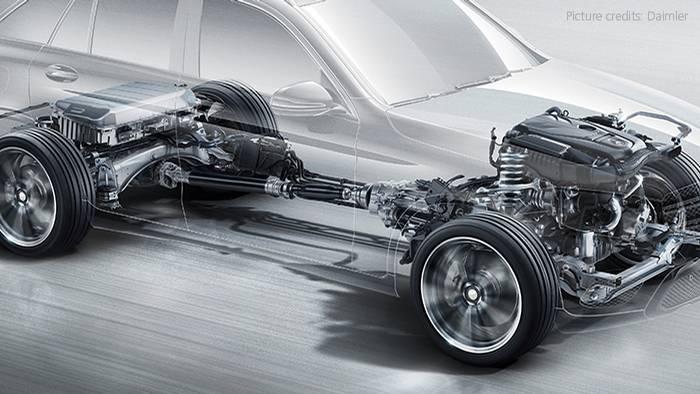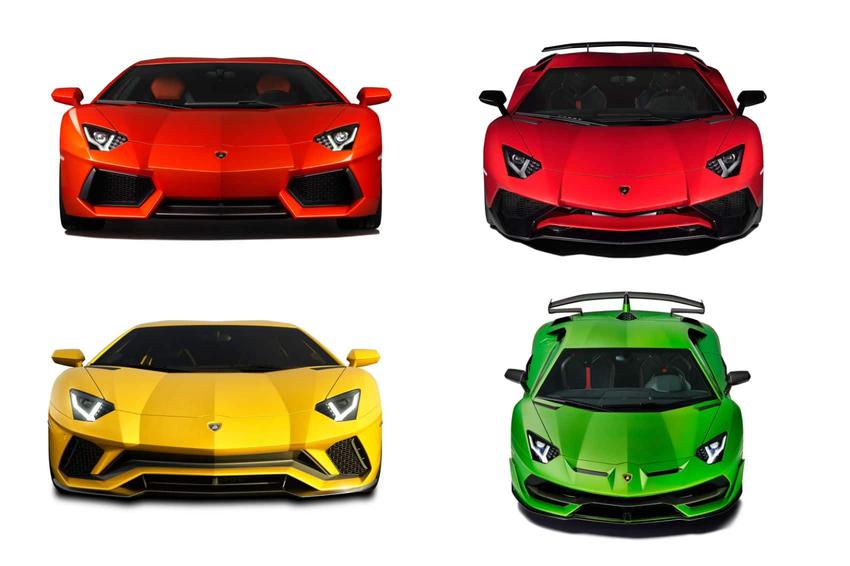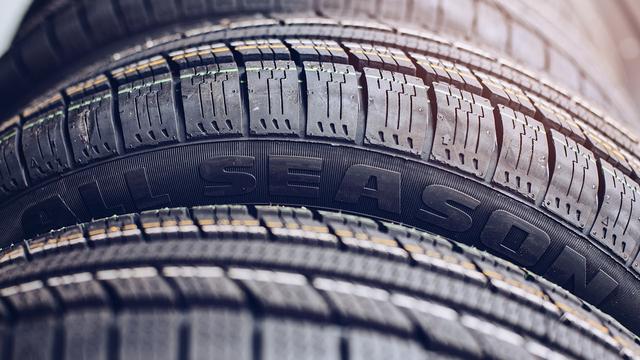What does the powertrain warranty include?
The powertrain warranty covers the components and systems responsible for keeping your vehicle moving.
When you purchase a new car, your manufacturer will typically guarantee the powertrain for at least 5 years or 60,000 miles.
While your powertrain warranty is in place, your vehicle’s engine, transmission, and drivetrain are protected against covered defects or damages.
After the manufacturer’s powertrain warranty expires, you can prolong your vehicle’s powertrain coverage by purchasing an extended warranty.
A powertrain warranty protects the most essential components of your vehicle, but what exactly does that mean?
The term “powertrain” refers to the parts of your vehicle that transmit and moderate power from your car’s engine to its wheels. By getting to know your manufacturer’s powertrain warranty, you’ll not only improve your overall peace of mind, but you’ll also be able to decide if it is worth purchasing a longer powertrain warranty from one of the best extended car warranty companies.
To get the process started, this guide will break down what a powertrain warranty is, what powertrain coverage entails, and finally, what you should do when your powertrain warranty expires.
Best Extended Warranty
Check out our top picks for your car:
View Article
What Is A Powertrain Warranty?
What Does A Powertrain Warranty Cover?
What Doesn’t A Powertrain Warranty Cover?
Powertrain Warranty vs. Bumper-to-Bumper Warranty
How Much Does A Powertrain Warranty Cost?
How Long Does A Powertrain Warranty Last?
3 Tips for Taking Care of Your Car’s Powertrain
Where Do You Get a Powertrain Warranty?
How to Protect Your Vehicle After Your Powertrain Warranty Expires
Why Choose A Third-Party Extended Warranty Provider?
Frequently Asked Questions
What Is A Powertrain Warranty?
A powertrain warranty covers the parts that make your car move, including the engine, transmission, and drivetrain. New cars typically come with a powertrain warranty that protects the car after a mechanical breakdown for a specified period of time.
The components that make up a car’s powertrain are some of the most expensive and essential parts of the vehicle. Even basic powertrain repairs can end up costing thousands of dollars in labor and parts, so a good powertrain warranty can be especially valuable as your vehicle ages. For example, it can cost upwards of $6,000 to replace the transmission on a 2018 Honda Civic, according to RepairPal.
What Does A Powertrain Warranty Cover?
Broadly speaking, a powertrain warranty covers three key vehicle systems: the engine, transmission, and drive system. Covered components within these systems vary depending on your vehicle and powertrain warranty contract.
We know this isn’t necessarily much to go on, so we’ve compiled a handy table listing the parts commonly covered under a powertrain warranty.
Vehicle System
Standard Components Covered Under Powertrain Warranty
Engine
Engine mount, cylinder block, cylinder heads, engine gaskets and seals, pistons and compressor gaskets, fuel injection and hydraulic/oil/water pumps, timing chain, valvetrain, flywheel, timing gears and belts
Transmission
Transaxle, torque converter, transfer case (all-wheel and four-wheel drive), hydraulic lines, central gearset, clutches, actuation sensors, transmission fluid lines
Drive system
Differentials and differential housing, propeller shafts, all internal joints, driveshaft and axle shafts, constant-velocity (CV) and universal (U) joints, axle hubs, intake manifolds, wheel bearings
What Doesn’t A Powertrain Warranty Cover?
A powertrain warranty doesn’t cover systems beyond your vehicle’s engine, transmission, and drivetrain. This means you won’t have coverage for things like the braking system, chassis and paneling, air conditioning, cabin entertainment, suspension, and auxiliary electrical systems.
Depending on your plan and provider, powertrain warranties may also exclude the following maintenance and repair items:
Oil changes
Tire rotations
Engine control module sensors and connectors
Secondary hosing and secondary hydraulic lines
Remember, your powertrain warranty will only cover repairs or component replacements when the damage is verifiably caused by flawed workmanship, defective materials, or malfunctioning drive systems. Damage resulting from vehicle accidents, aftermarket modifications, irregular servicing, or negligent driving will not be covered by your powertrain warranty.
If a powertrain component is damaged due to everyday wear and tear, it will also be excluded from powertrain warranty coverage. Claim denial due to wear and tear is especially common for the following powertrain components:
Clutches
Timing belts
Oil filter unit
Cylinder heads
Distributor caps and rotors
Engine control module sensors
Finally, powertrain warranties do not include coverage provisions for damage caused by storms, fire, flooding, vandalism, or theft. If you want to cover your vehicle against these potential dangers, you will need to purchase a comprehensive car insurance policy.
Powertrain Warranty vs. Bumper-to-Bumper Warranty
A manufacturer warranty often includes separate powertrain and bumper-to-bumper warranty coverage. The powertrain warranty covers the engine, transmission, and drivetrain, while bumper-to-bumper coverage – a more comprehensive warranty – covers all other major systems between your car’s bumpers.
A powertrain warranty covers fewer components than a bumper-to-bumper warranty, but the coverage remains active for a longer period of time. The industry standard for bumper-to-bumper warranty coverage is three years or 36,000 miles, though some manufacturers have terms up to five years or 60,000 miles.
Some brands do not offer a separate powertrain warranty, and all coverage is provided by a four-year warranty that includes bumper-to-bumper and powertrain coverage. This is typical for luxury brands.
Even though bumper-to-bumper warranties are more comprehensive than powertrain warranties, you’ll still encounter some coverage exclusions, such as:
Interior trim
Window glass
Brake pads and shoes
Tire support and tire tread
Chassis structure and paneling
Cabin fascia, fabrics, and seating
How Much Does A Powertrain Warranty Cost?
The powertrain warranty that comes with new cars is included at no cost. After your factory warranty expires, you may consider purchasing an extended warranty. Our research shows that a powertrain warranty costs $2,856 on average and adds anywhere from three to six years of coverage. Keep in mind that this amount can be broken up into small monthly payments with zero-interest financing.
To get a better understanding of powertrain warranty costs, we reached out to several reputable extended car warranty companies for quotes for a 2013 Honda Accord with 90,000 miles. Here’s what we were quoted for powertrain warranties with a $100 deductible:
Warranty Company
Powertrain Warranty Plan
Term Length
Monthly Payment
Down Payment
Total Cost
Endurance
Secure Plus
5 years/100,000 miles
$81.67 for 36 months
$174.75
$2,940.12
CARCHEX
Silver
5 years/75,000 miles
$116.09 for 24 months
First month’s payment
$2,786.16
CarShield
Gold
Unlimited
$99.99 monthly
First month’s payment
$1,199.88 per year
Prote

Driveline
4 years/75,000 miles
$78.86 for 42 months
$85.00
$3,312.12
How Long Does A Powertrain Warranty Last?
A standard manufacturer powertrain warranty lasts for five years or 60,000 miles, whichever comes first. However, many manufacturers have powertrain warranties with shorter or longer terms, and extended powertrain warranty coverage will depend on your provider.
The table below lists the powertrain warranty lengths for many of the major auto brands sold in the U.S.
Powertrain Warranty
Term Length
Genesis Warranty
10 years/100,000 miles
Hyundai Warranty
10 years/100,000 miles
Kia Warranty
10 years/100,000 miles
Lincoln Warranty
6 years/70,000 miles
Chevy Warranty
5 years/60,000 miles or 8 years/80,000 miles for Bolt electric vehicle
Ford Warranty
5 years/100,000 miles or 5 years/160,000 miles for diesel engine models
Chrysler Warranty
5 years/60,000 miles
Dodge Warranty
5 years/60,000 miles
Honda Warranty
5 years/60,000 miles
Jeep Warranty
5 years/60,000 miles
Mazda Warranty
5 years/60,000 miles
Nissan Warranty
5 years/60,000 miles
Subaru Warranty
5 years/60,000 miles
Toyota Warranty
5 years/60,000 miles
Audi Warranty
4 years/50,000 miles
Fiat Warranty
4 years/50,000 miles
If you purchase a used car that’s still under warranty, the remaining powertrain coverage term may be adjusted or standardized. For example, a brand new Hyundai Elantra usually comes with 10 years/100,000 miles of powertrain coverage as part of the Hyundai warranty. In comparison, powertrain warranty coverage for a pre-owned Hyundai Elantra is capped at the standard term of five years or 60,000 miles.
3 Tips for Taking Care of Your Car’s Powertrain
Keep your service records up to date. By proactively identifying and fixing minor issues, you’ll stop small problems from snowballing into more serious mechanical complications. In addition to regular maintenance, we strongly recommend servicing your vehicle when it reaches certain mileage milestones, such as 30,000 miles or 50,000 miles.
Perform preventative maintenance as needed. As a car owner, you are responsible for a wide range of time-sensitive maintenance tasks. To keep your powertrain running smoothly, you’ll need to regularly check, clean, or change your car’s engine oil, radiator fluid, internal lubrication, air filter, oil filter, and battery.
Drive responsibly. Reckless driving is one of the fastest ways to damage your powertrain. If you want to prolong the life of your powertrain, we recommend the following best practices: Minimize general engine stress, avoid hazardous off-road terrain, and avoid potholes. According to studies from AAA, pothole damage alone costs U.S. drivers approximately $3 billion in vehicle repairs every year.
Where Do You Get a Powertrain Warranty?
When you purchase a new car, it comes with a new vehicle limited warranty package. This bundle of warranties typically includes a manufacturer’s powertrain warranty. You can also purchase an extended powertrain warranty from the dealership or a third-party provider.
How to Protect Your Vehicle After Your Powertrain Warranty Expires
When your manufacturer warranty expires, you can either drive unprotected or renew your coverage through an extended powertrain warranty. You have two options for extended warranties: Purchase manufacturer-backed vehicle service contracts through a dealership or contact a third-party provider for a customized plan.
Different extended warranty plans provide different levels of component coverage. Depending on your provider, an extended powertrain warranty contract can provide access to a wide range of perks, such as:
Concierge support
Roadside assistance
Trip interruption coverage
Rental car reimbursements
Free or discounted car performance adjustments
Reimbursement for towing, fuel delivery, and battery recharge services
Why Choose A Third-Party Extended Warranty Provider?
The extended powertrain warranty provider you choose will have a big impact on your coverage, plan cost, and the claims process. Coverage from a manufacturer will usually guarantee you original equipment manufacturer (OEM) parts, while a third-party protection plan generally provides more customizable coverage.
Third-party extended warranty providers are not constrained by stringent manufacturer coverage stipulations. Your powertrain warranty coverage can be more closely tailored to your car’s expected mileage, its projected repairs, and your personal budgetary requirements.
Third-party companies aren’t affiliated with a single auto manufacturer or dealership. As a result, car owners are under no contractual obligation to have their vehicle exclusively repaired at manufacturer-authorized service locations. You can use your favorite local repair shop or head to the closest dealership.
To see how much you would pay for powertrain warranty coverage from our top recommended providers, get a few free quotes for your vehicle below.
Featured Extended Warranty Companies
We reviewed the industry’s top extended auto warranty providers, and here are our featured picks.
Best Overall
Best for Used Cars
Low-Cost Plans
Endurance
CARCHEX
Select Auto Protect
Get Quote
Get Quote
Get Quote
(866) 990-3410
(866) 950-7122
(860) 294-4933
Frequently Asked Questions
Is suspension covered under a powertrain warranty?
No, it is rare for a powertrain warranty to cover the cost of suspension repairs or replacements. Remember, the powertrain warranty only guarantees vehicle parts that are directly involved with your car’s forward or backward movement.
Are sensors covered under a powertrain warranty?
For the most part, yes, sensors are covered under a powertrain warranty. Standard coverage includes essential engine control module sensors. However, your car’s auxiliary sensor systems, such as cabin awareness, braking, or suspension sensors, will not usually be covered under a powertrain warranty.
Are powertrain warranties transferable?
Yes, powertrain warranties are generally transferable. If the ownership of a car changes, the vehicle’s powertrain warranty can be transferred to the new owner, usually for a small transfer fee.
Can powertrain coverage be voided?
Yes, powertrain coverage can be voided if you ignore the conditions of your warranty contract. If you only commit a minor breach of contract, your provider may choose to deny your coverage claim but allow you to keep your underlying powertrain plan for future repairs. However, more serious warranty breaches, such as off-road misuse of your vehicle, negligent service scheduling, or aftermarket modification, can void your entire powertrain warranty.
What is the average cost of an extended car warranty?
The average cost of an extended car warranty is about $2,800. Your own price will depend on your vehicle make, model, age, and mileage, as well as the extended car warranty company you choose and your deductible.
What does an extended powertrain warranty cover?
The extended powertrain warranty covers the same systems as the manufacturer’s powertrain warranty: engine, gearbox, and transmission. The specific internal components in these systems will vary depending on your contract.
-
Latest
 Lamborghini Aventador: Looking back at ten years of dominance and innovation
Lamborghini Aventador: Looking back at ten years of dominance and innovationThe Lamborghini Aventador follows the tradition of the large, bold, V12-powered Lambos, and reached its peak in 1967 with the world’s first super sports car, the Miura. Aventador enters our consciousn...
-
Next
 Best all-season tires of 2021
Best all-season tires of 2021All-season tires are usually the best choice for daily driving and commuting.The best all-season tires are manufactured by Michelin, Goodyear, and Hankook.It’s smart to compare multiple tire models be...
Popular Articles
- Ivy Charging Network cooperates with the Ontario municipal government to build a level 2 charger
- The Canadian government invests in a clean car and aerospace center in Hamilton
- Mitsubishi Motors Canada Appoints Kenji Harada as New President and Chief Executive Officer
- Nissan announces Canadian pricing for the new 2021 Rogue
- FedDev Ontario invests in Canada's first car accelerator in Windsor-Essex
- 2019 Volvo V60 unveiled, emphasizing versatility and safety
